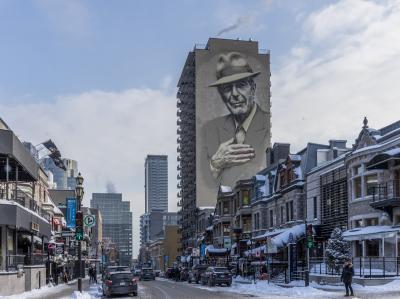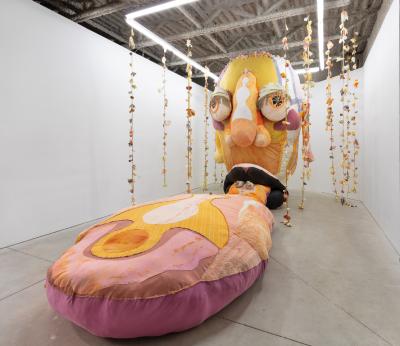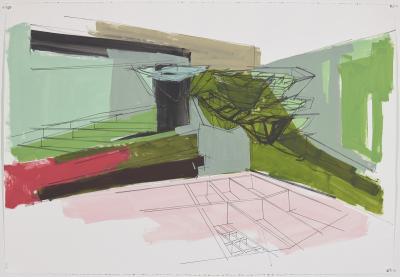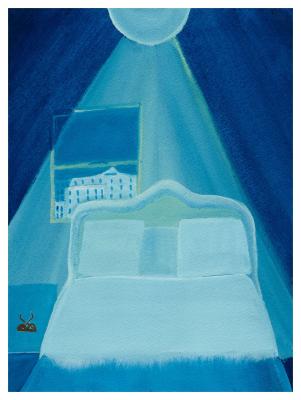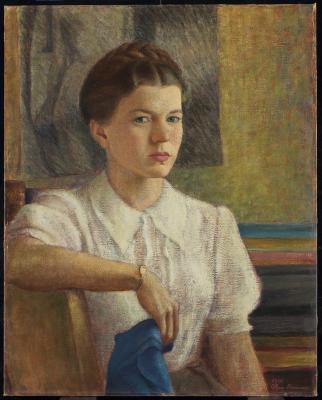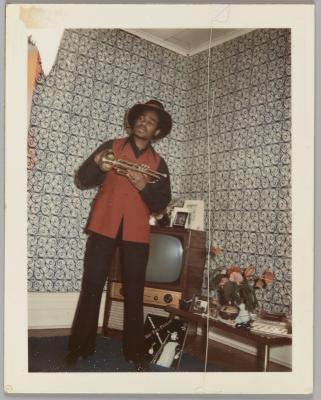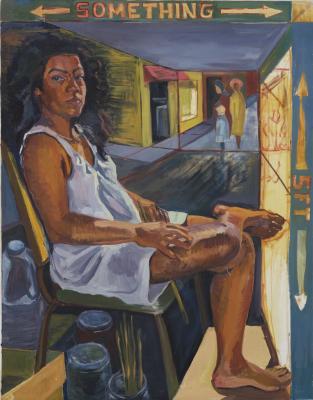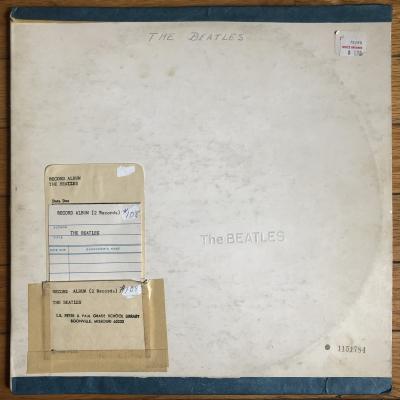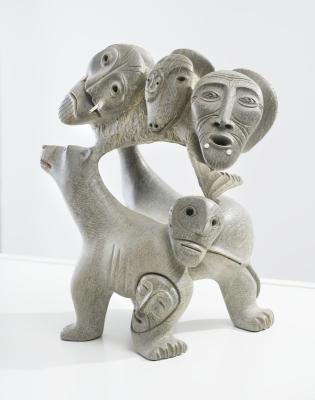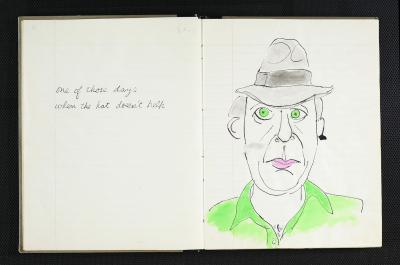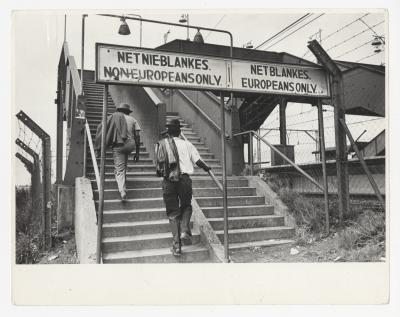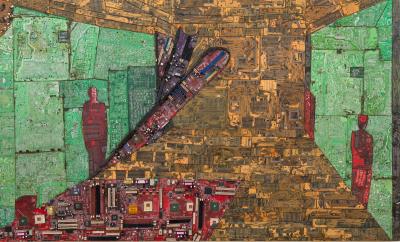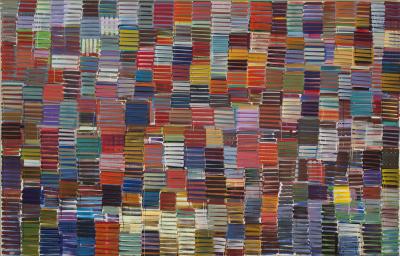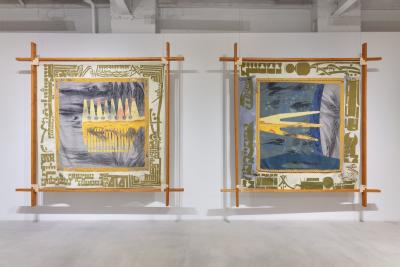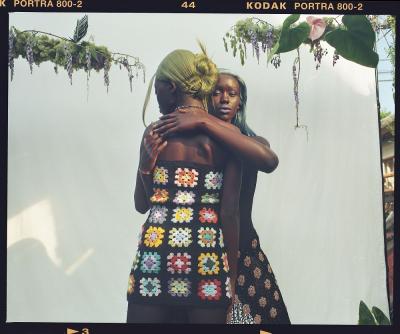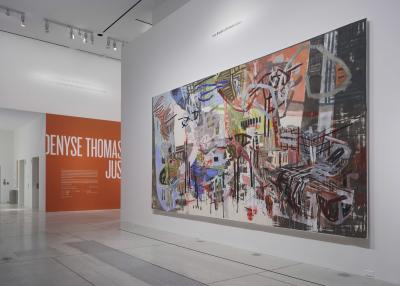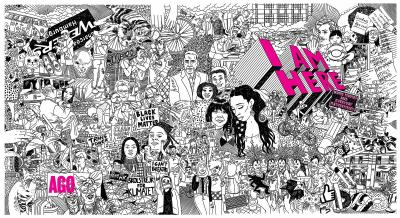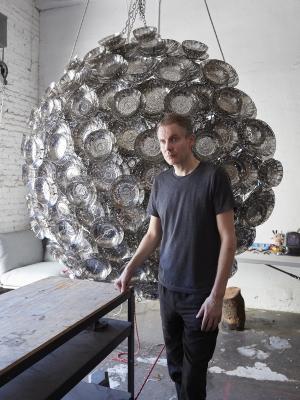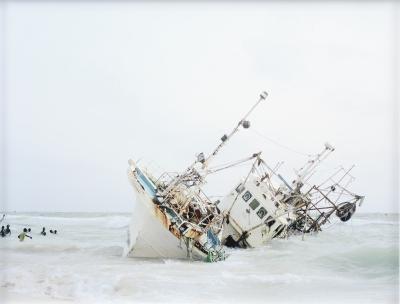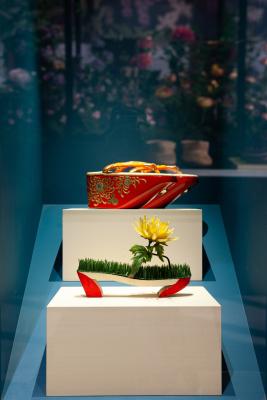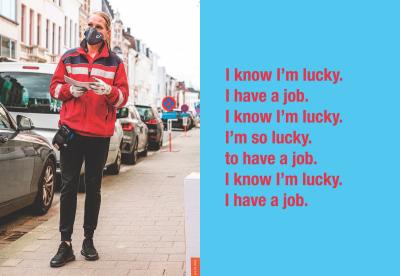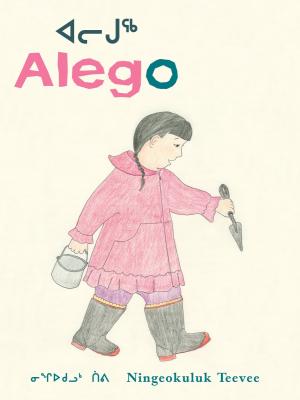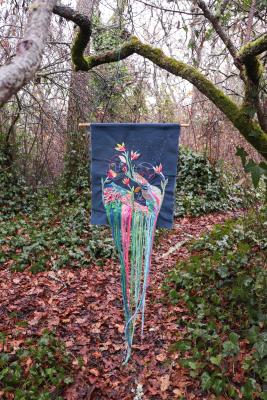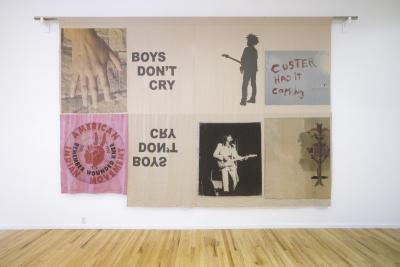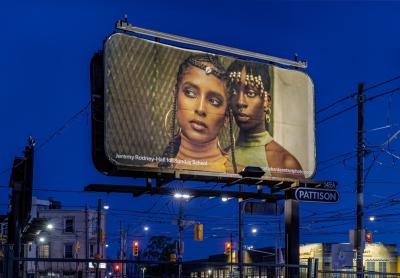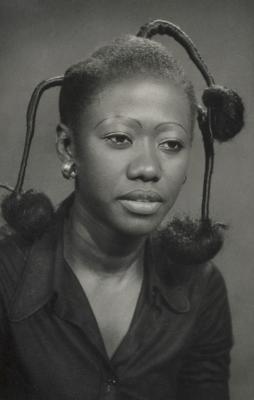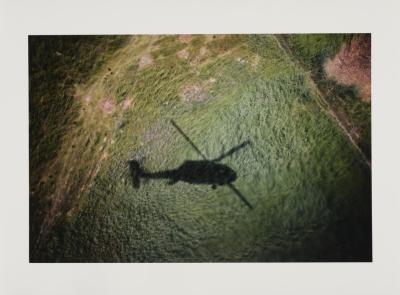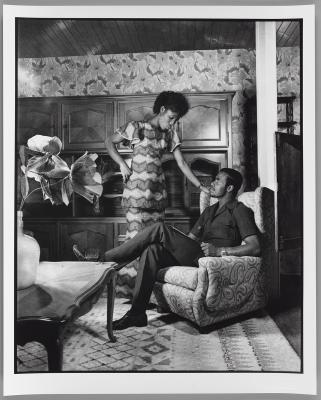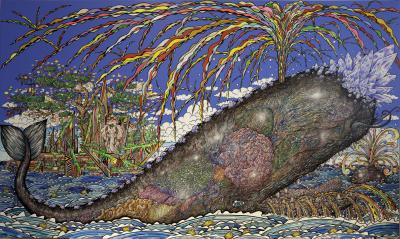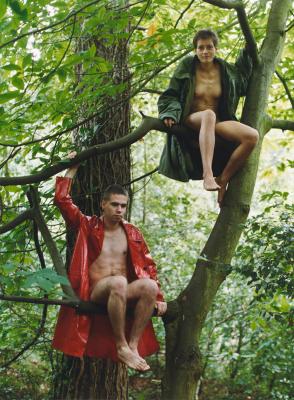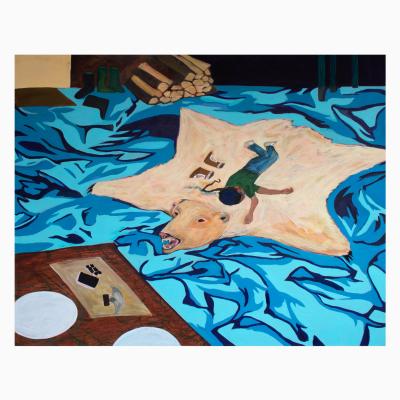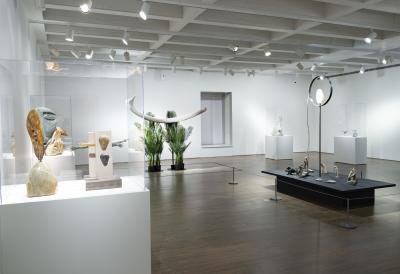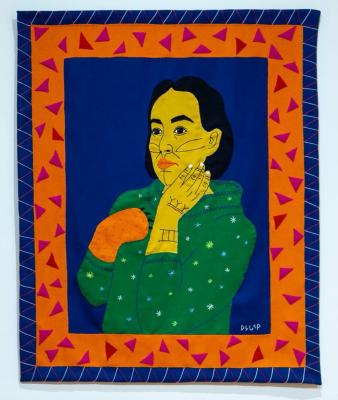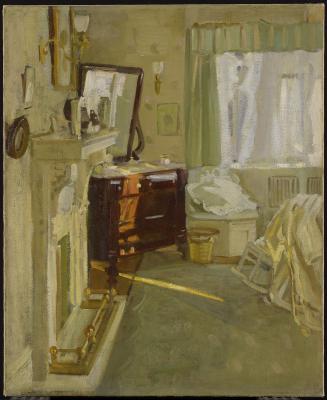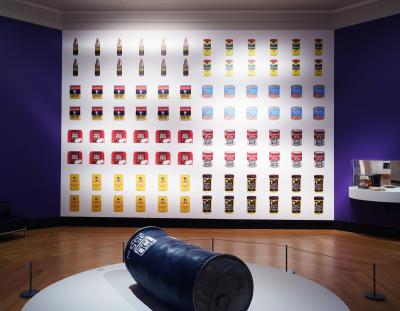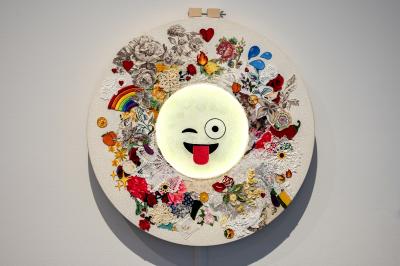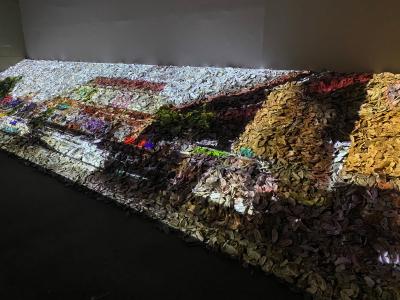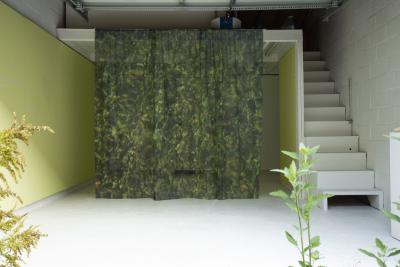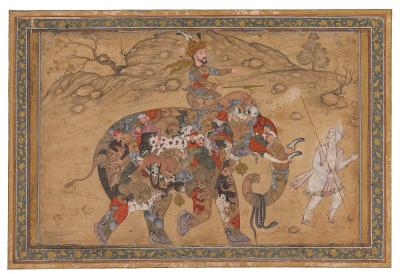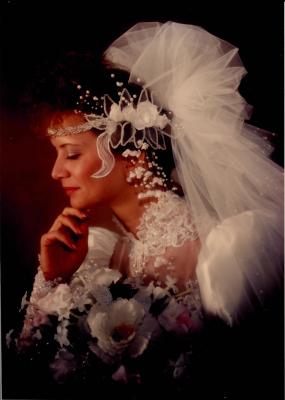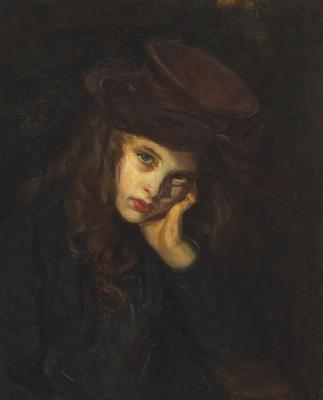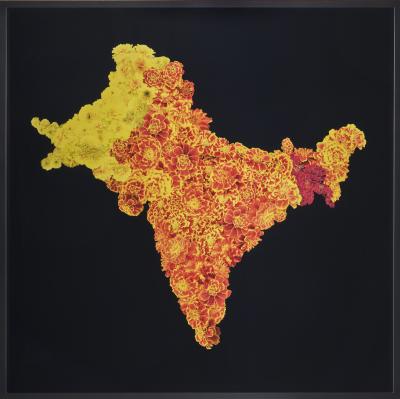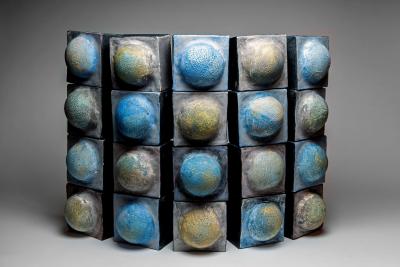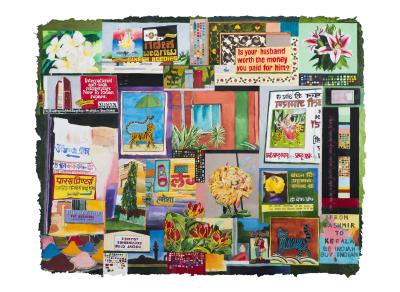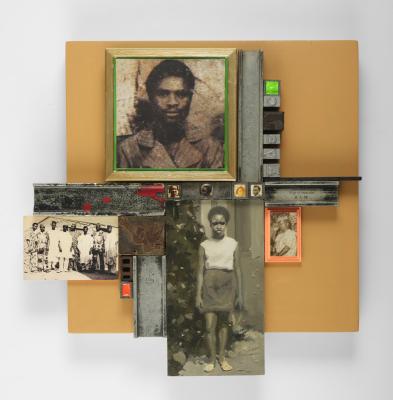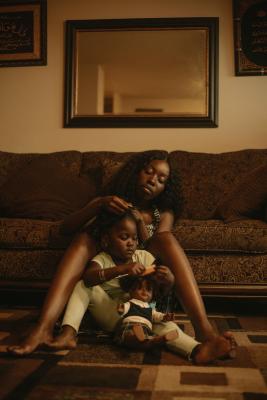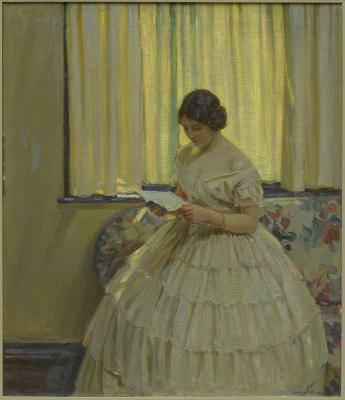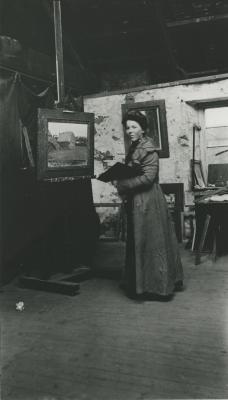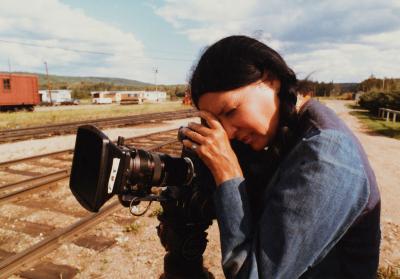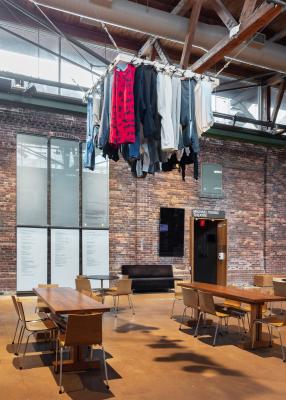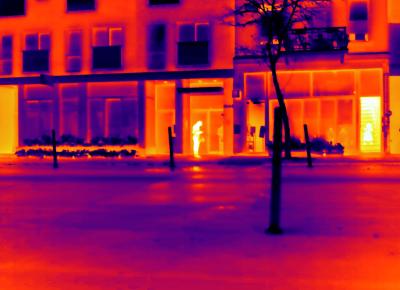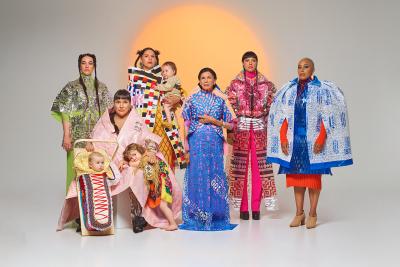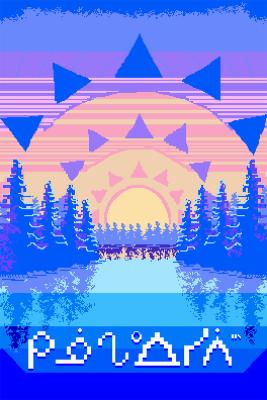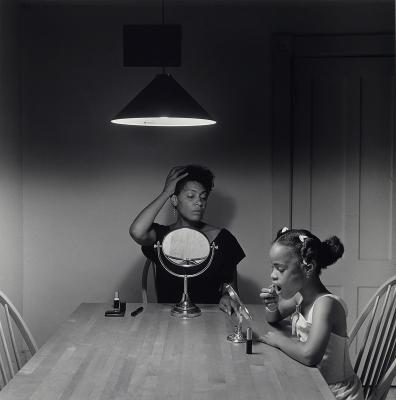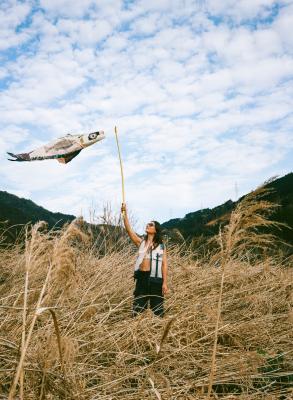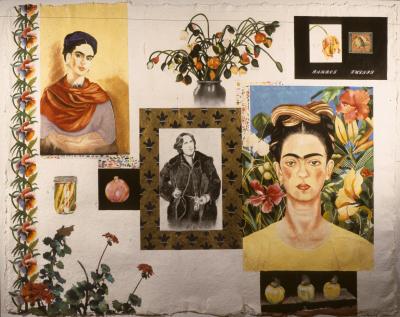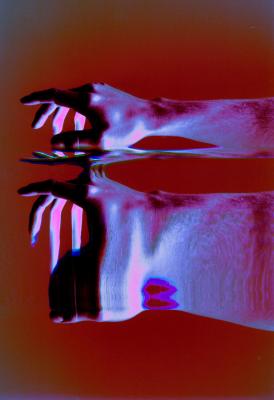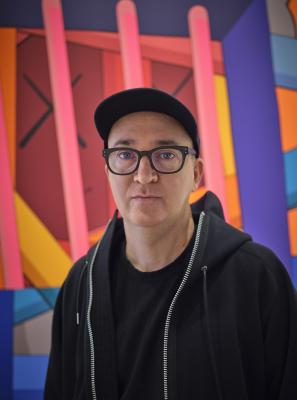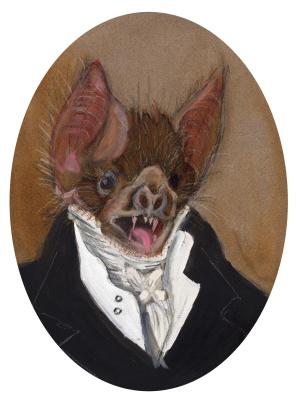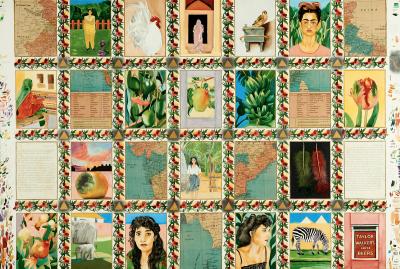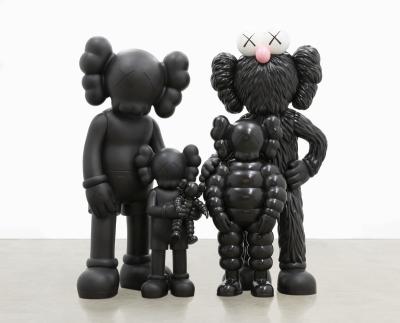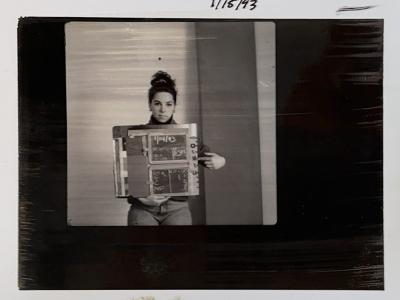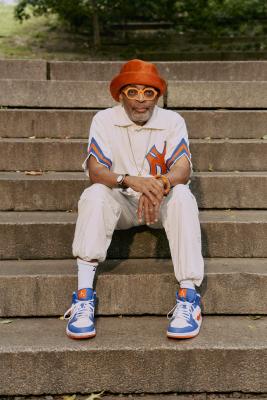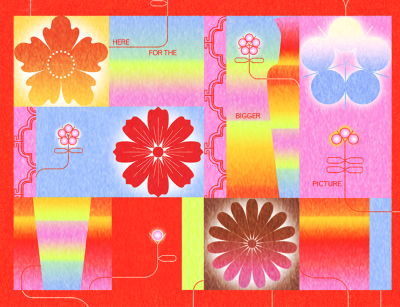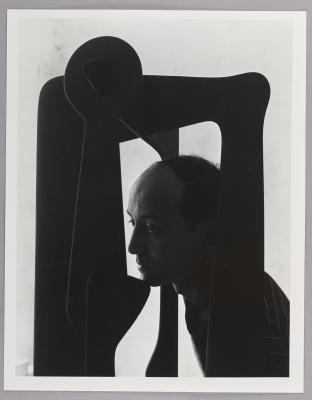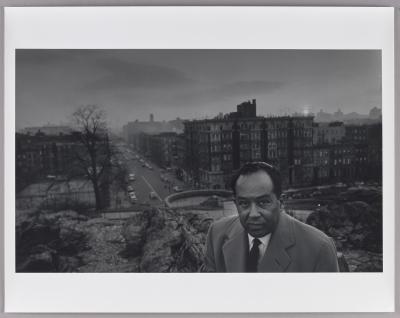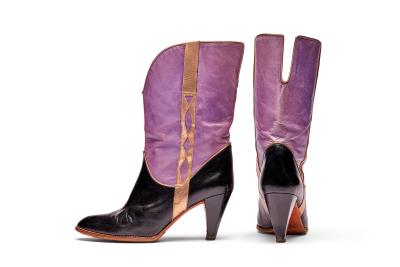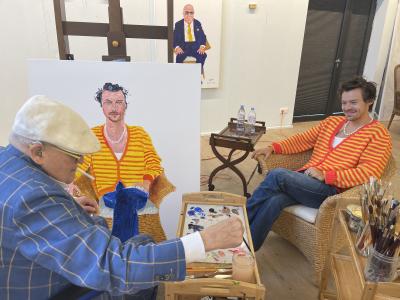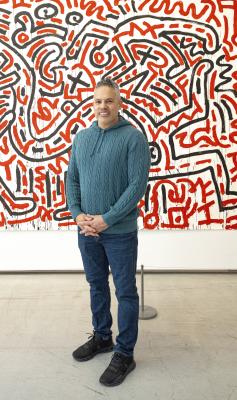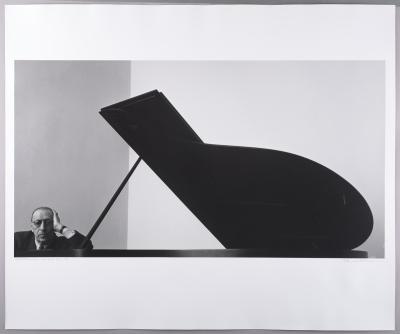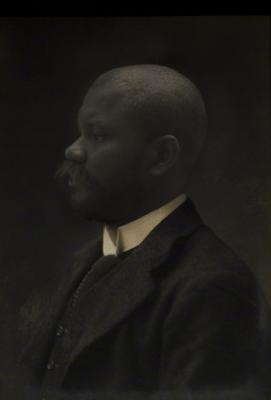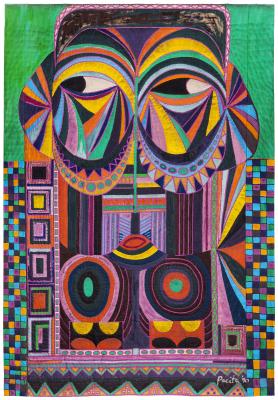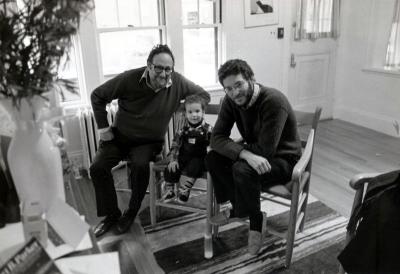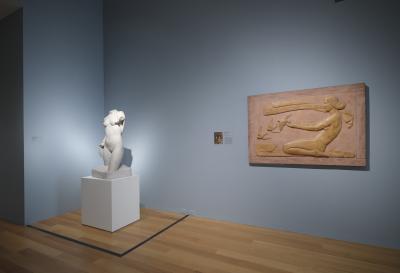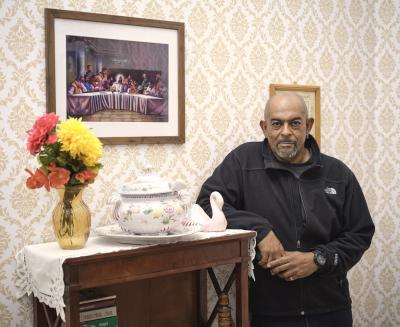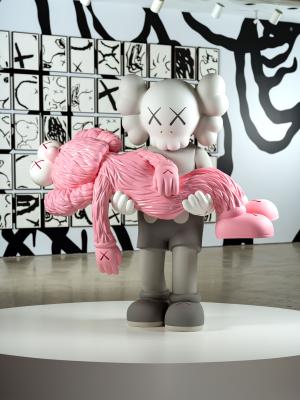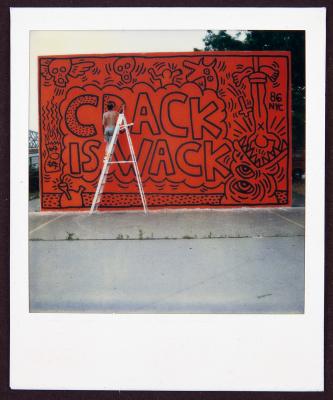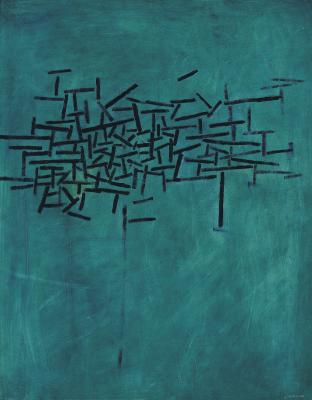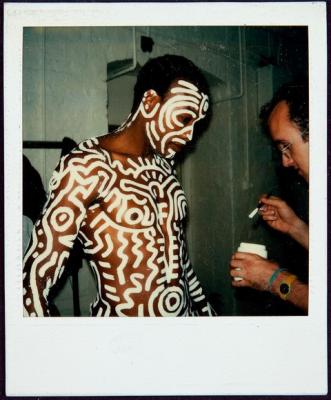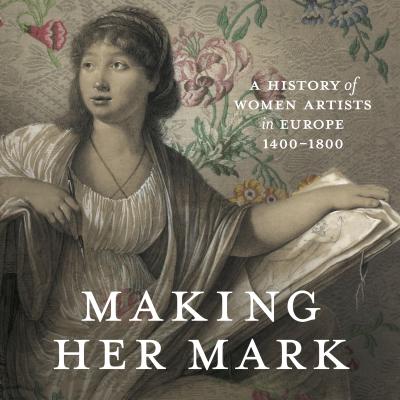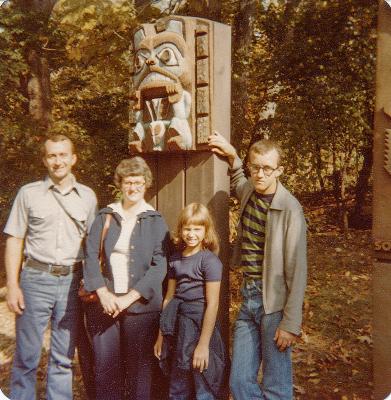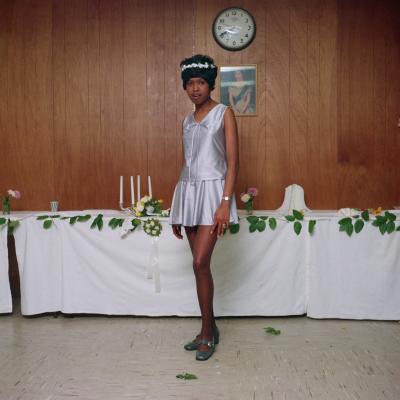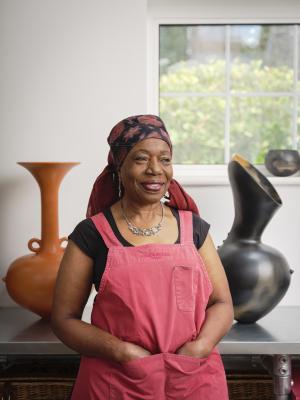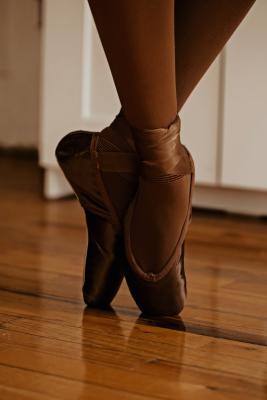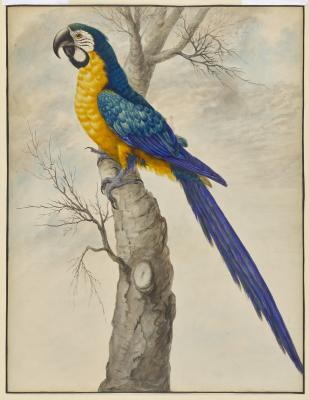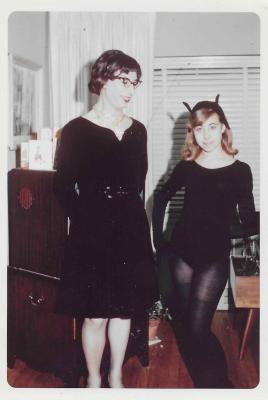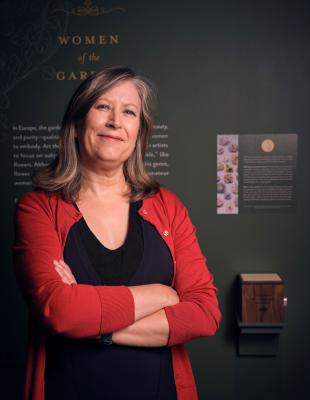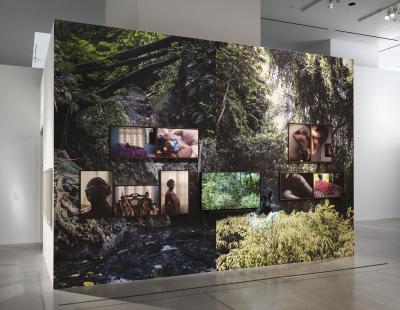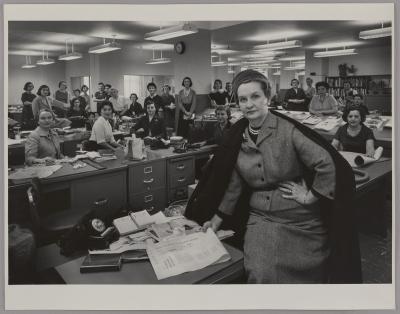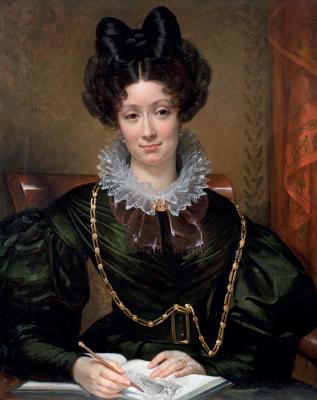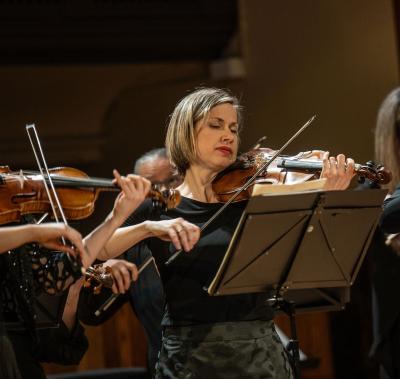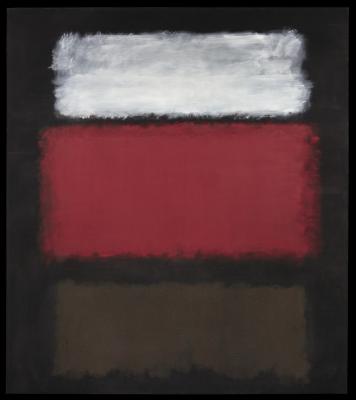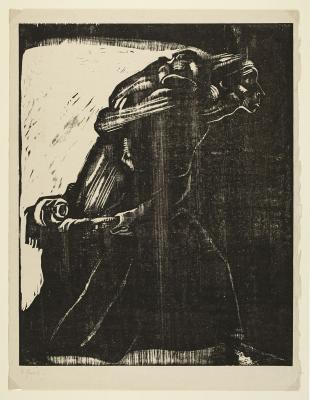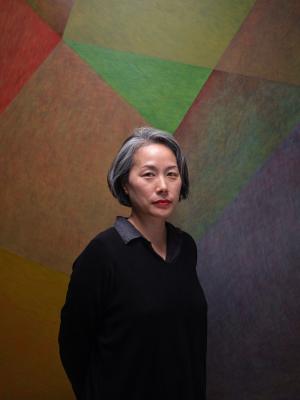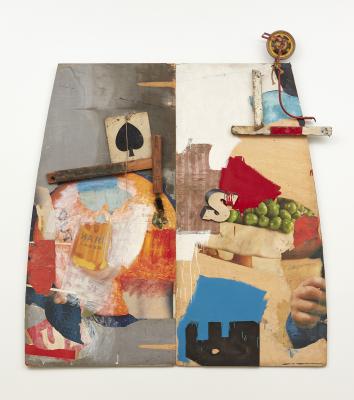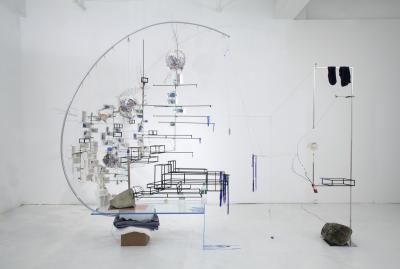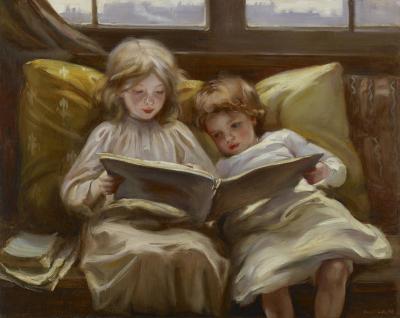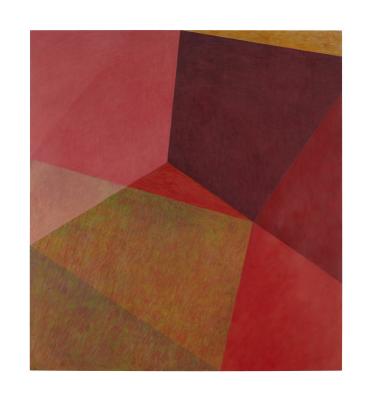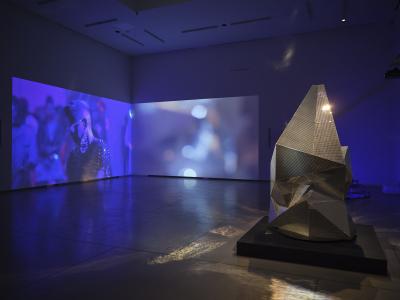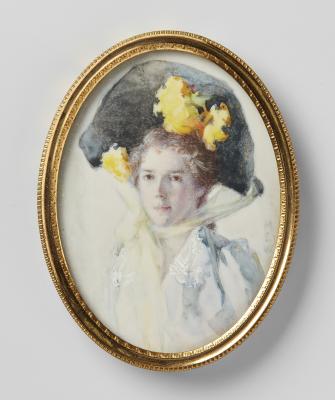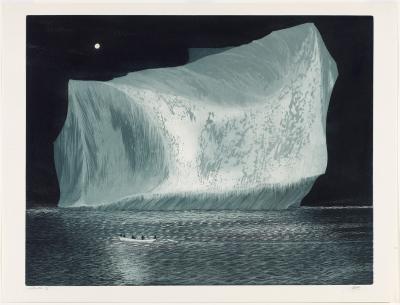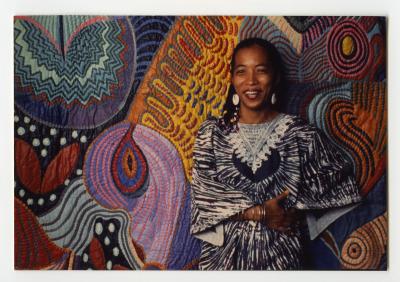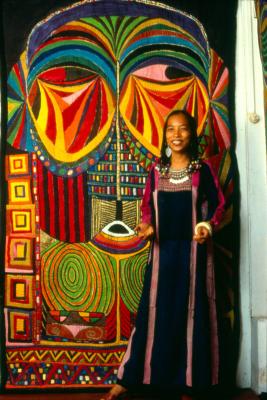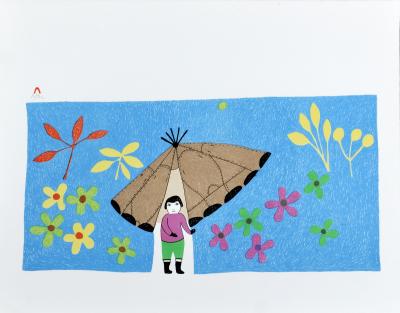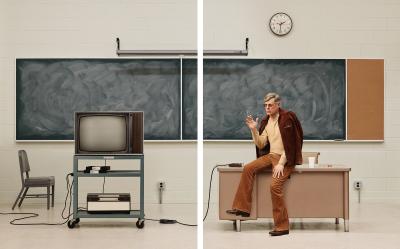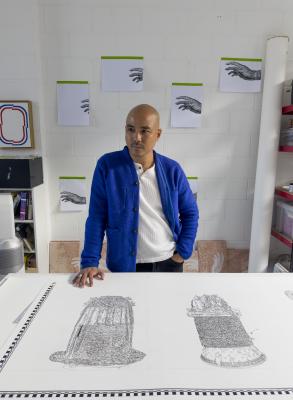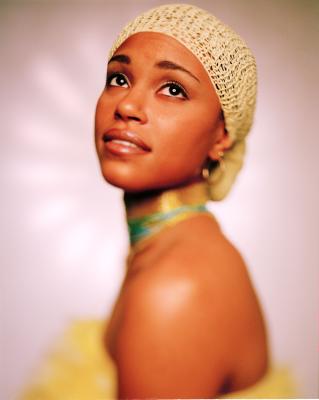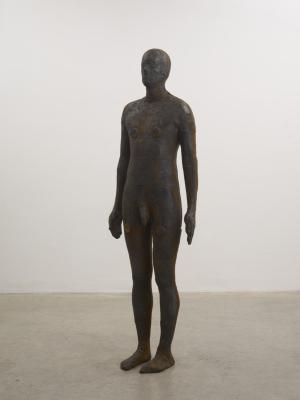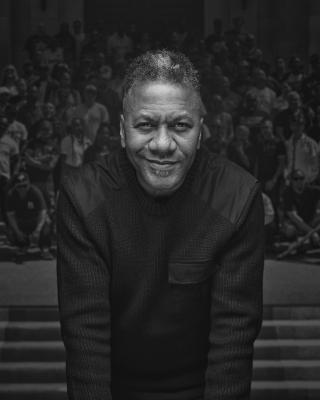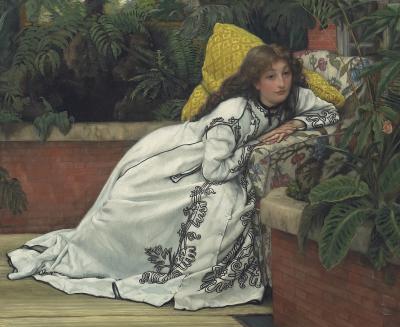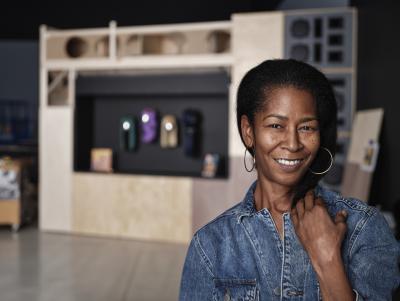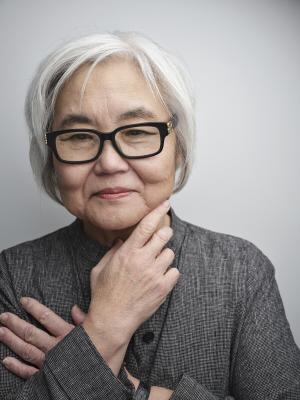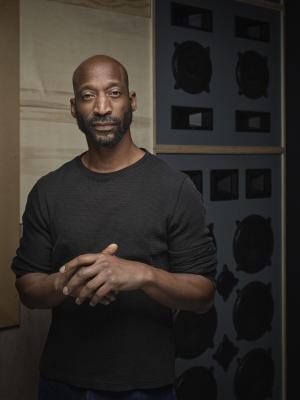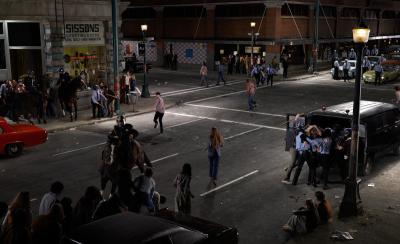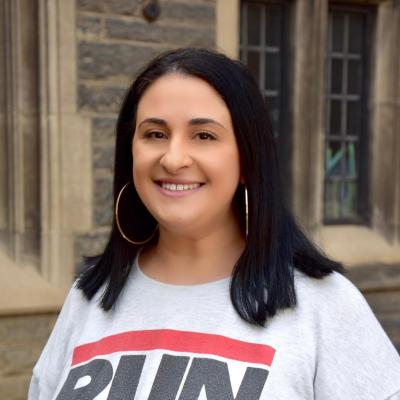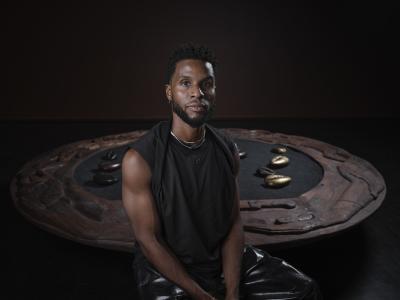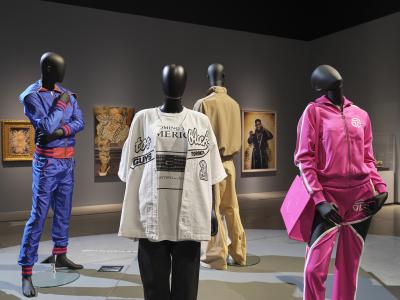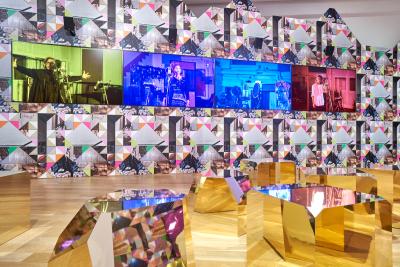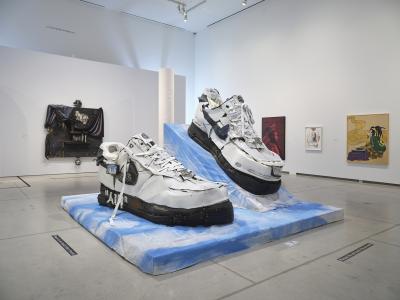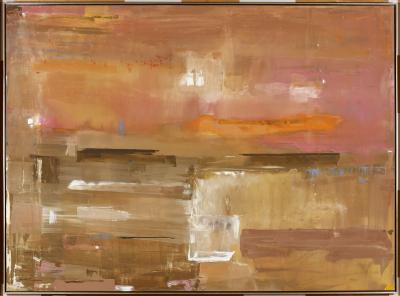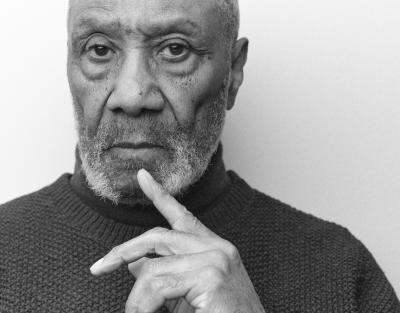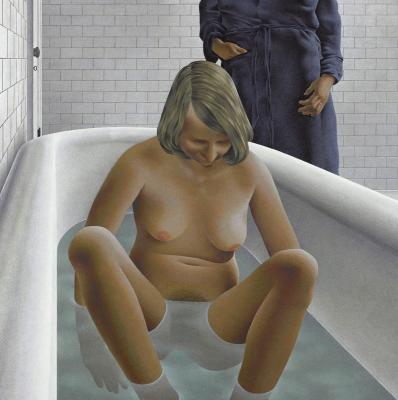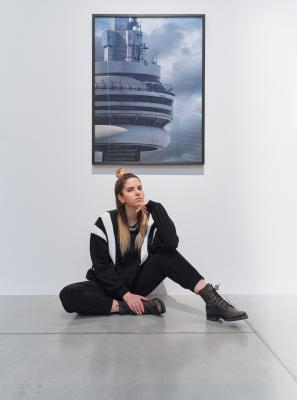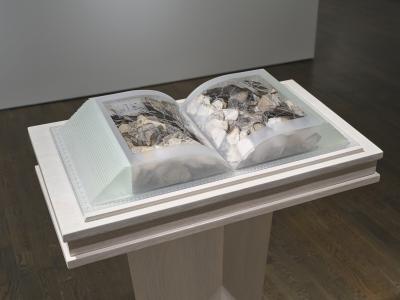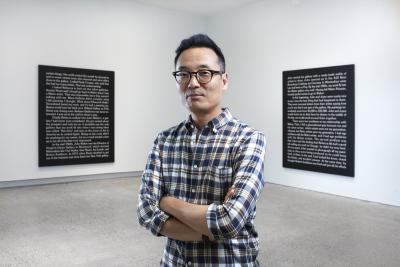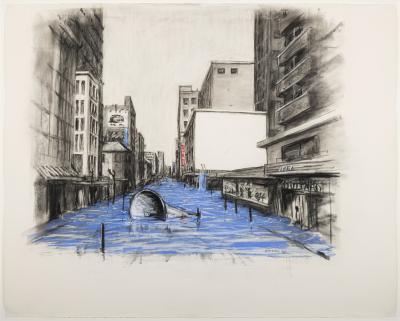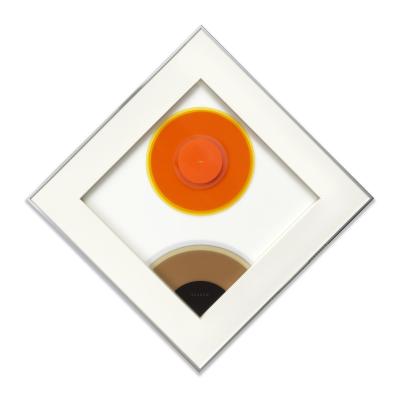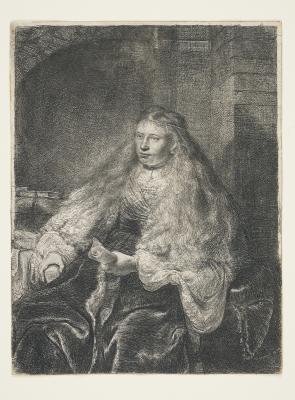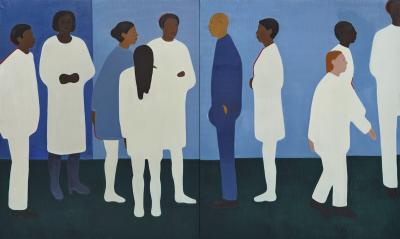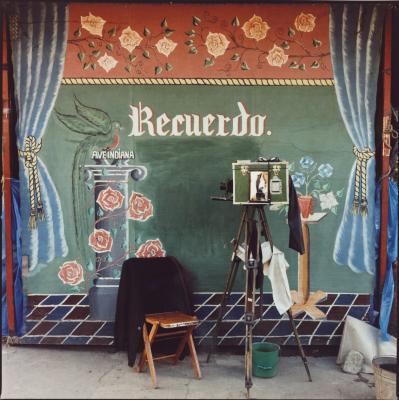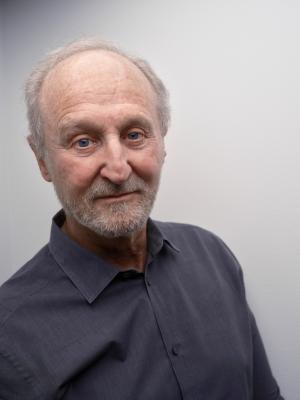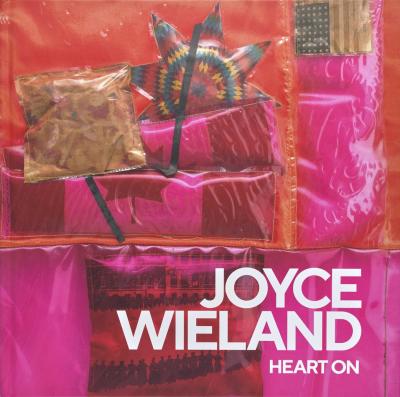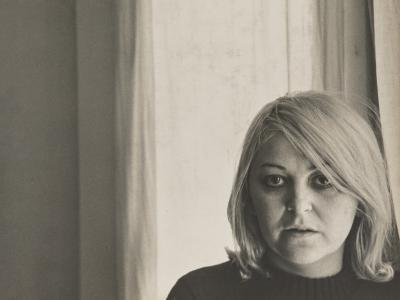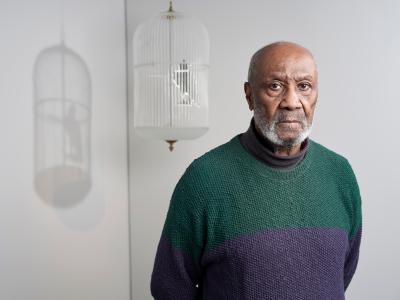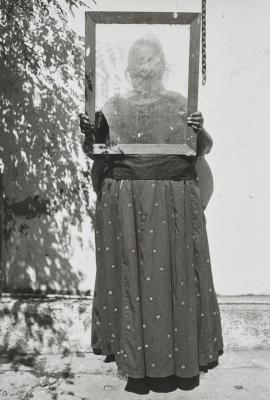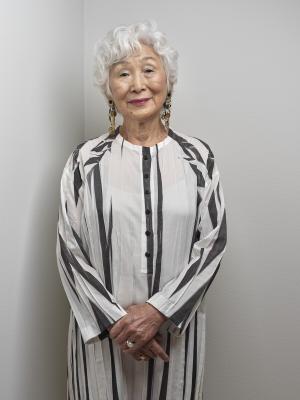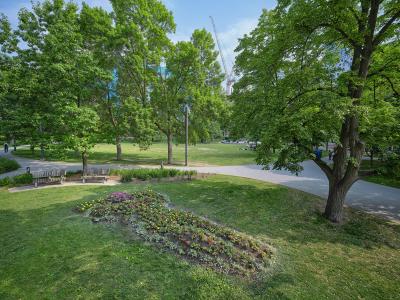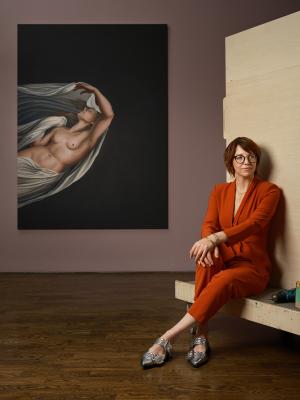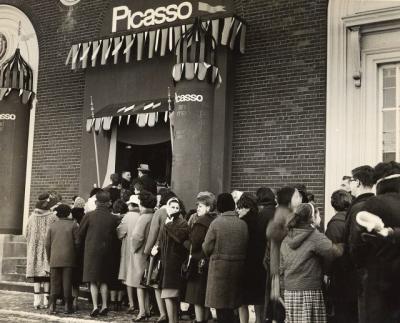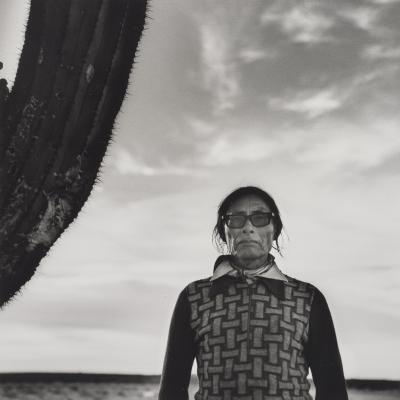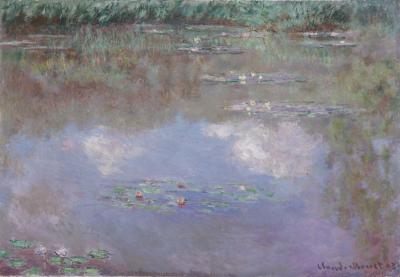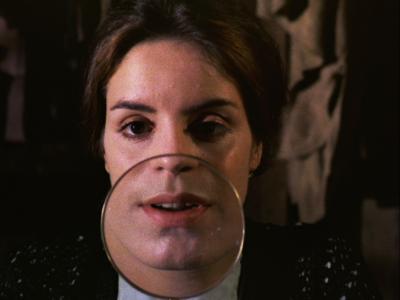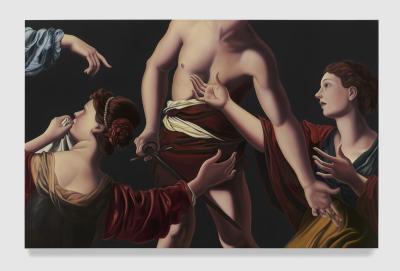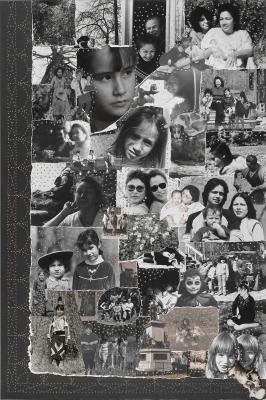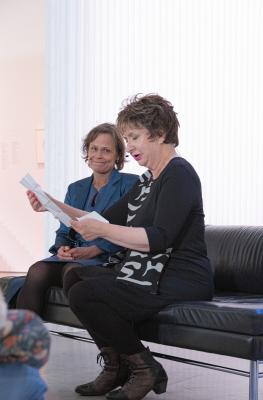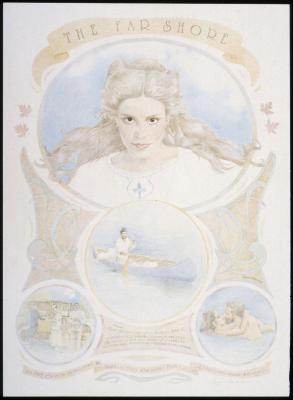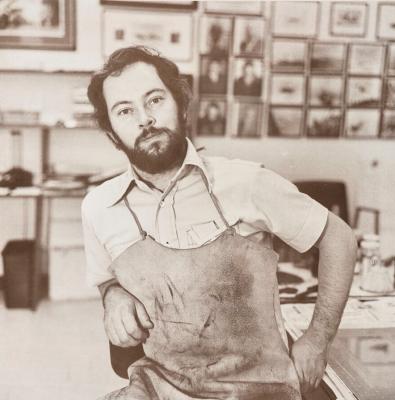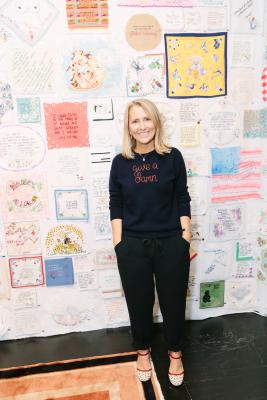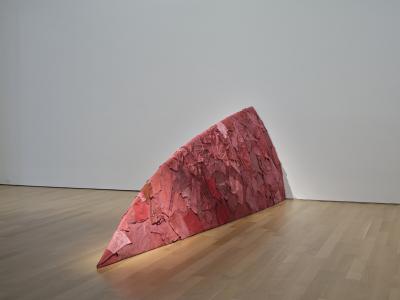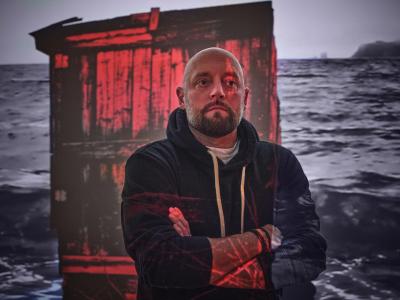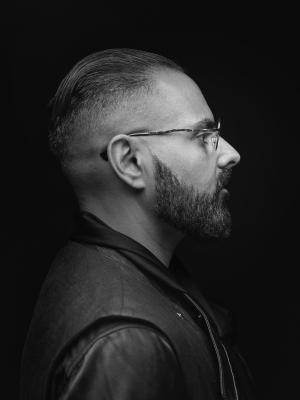How the body tells stories with Marcia Michael
The London-based multidisciplinary artist discusses her poignant installation featuring her mother
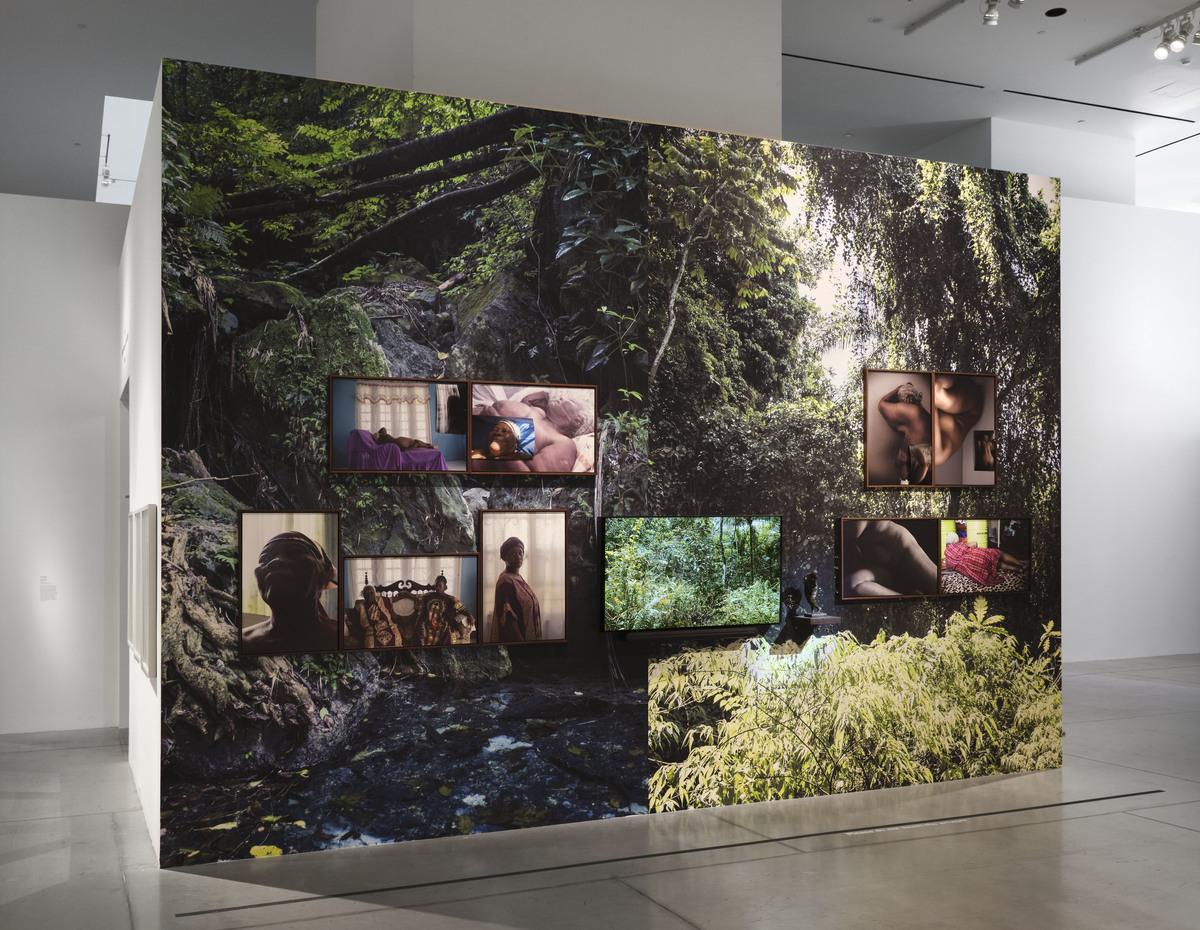
Installation view: Life Between Islands: Caribbean - British Art 1950s - Now, December 11 - April 1, 2024, Art Gallery of Ontario. Artworks © Marcia Michael, The Object of My Gaze, 2015- ongoing; Native Resistance 2017; Partus Sequitur Ventrum, 2015-2017; Mi Soon Come, Likkle More, 2021; Me Remembering You, 2021. Photo: AGO.
“There is such importance in knowing where you come from and where you belong. With this understanding in mind, it allows you to walk the steps you need to in the present towards the future.”
London-based multimedia artist Marcia Michael uses photography, sculpture, video, sound and computer-generated imagery to create The Object of My Gaze – a moving portrait of her elderly and ailing mother. The latest iteration of this ongoing project was presented as an installation and featured in the AGO presentation of Life Between Islands Caribbean-British Art, 1950s–Now. Like an altar, carefully placed elements like tiny figurative sculptures and framed photographs of Michael’s mother are set against the wall-length backdrop of the rural Jamaican landscapes of Saint Mary’s parish – where Michael’s mother immigrated from before coming to the UK. Michael and her mother collaborated to make this project, forming an intergenerational dialogue between mother and daughter.
Heralded by The Guardian as “exhilarating, mighty, radical, tender, as disturbing as it is beautiful,” Life Between Islands focused on the relationship between the Caribbean and Britain, reconsidering British art history in the 20th and 21st centuries from a Caribbean perspective. The group exhibition, which was on view at the AGO in the winter of 2024, originated at Tate Britain.
Michael was one of the over 30 artists working across mediums featured, along with Sir Frank Bowling, Aubrey Williams, Donald Locke, Sir Horace Ové, Sonia Boyce, Alberta Whittle, and Blue Curry. Life Between Islands was loosely organized chronologically over seven decades.
Foyer spoke with Michael about the themes laid bare in her practice – migration, displacement, memory, exile and Black matrilineage – and how she plans to pass down this work to her children.
This interview has been edited for length and clarity.
Foyer: You have previously described the importance of making and showing images of Black women. As a Black woman making and showing these images, how have you deepened your understanding of who you are through your practice?
Michael: In this series, The Object of My Gaze, my mother, and I participated in a ritual of sorts. One that allowed me, through an understanding of how she showed herself to the world and how she showed herself to me, to demonstrate back to my mother and myself not only that I have learned what she showed me, but through this her ways, I embodied her.
By this, I mean I found a way to gain knowledge about the women in my maternal ancestral family. I gained an understanding of how they loved.
My mother showed me what she wanted me to see and, in turn, pulled me into this conversation to assist me in understanding her and those who came before me. To find what it was that I had been searching for. To be the mother who guided her daughter on this journey of self-discovery. To claim from my own experiences, a process of recovery and becoming.
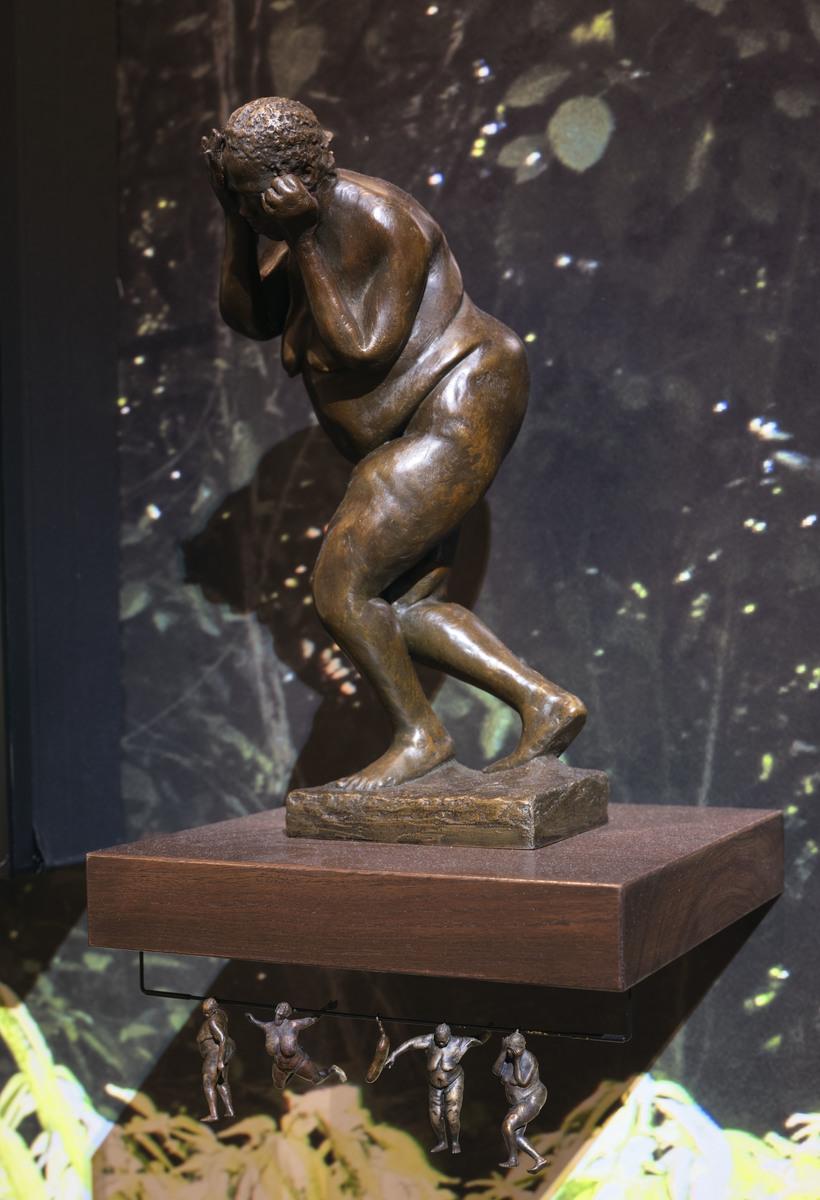
Installation view: Life Between Islands: Caribbean - British Art 1950s - Now, December 11 - April 1, 2024, Art Gallery of Ontario. Artwork © Marcia Michael, Me Remembering You, 2021. Photo: AGO.
You’ve also explained that you view the body as an archive. What do you mean by this?
In this series, The Object of My Gaze, it’s realizing that the colonial archives silenced and concealed this narrative of my matrilineal forbearers. My mother, in her way, offered herself to me, and thus, she became the archive I could turn to.
I realized that my mother owned her image, and this image--wide-ranging and uninhibited- could simultaneously foster conversations about the past and the future. Her knowledge of the past was guided by her own life and the stories her family had passed down to her. In doing so, I believed that her image somehow neglected the patriarchal gaze that was synonymous with the Black female body and thus, because of this, she became The Object of My Gaze. This was a place where I could navigate the records of our matrilineal existence through the use of her body, and her voice as a carrier.
I noticed that even her groans of pain had meaning. Her silences, her laughter and the songs she sang all had their own vocabulary. For the first and last time, I heard the stories she was telling me and understood that what I was encountering was not solely her voice, but the voices and bodies of the other women that resided in her as memories.
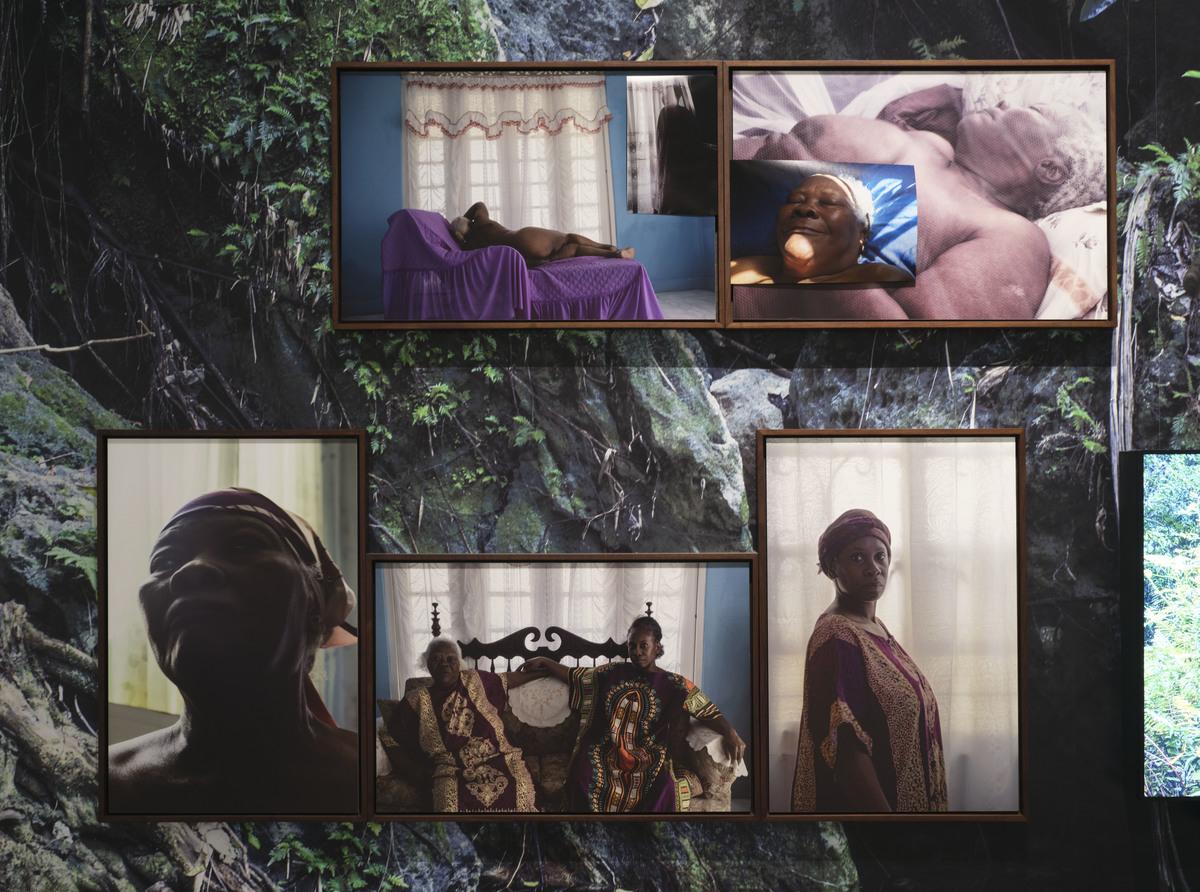
Installation view: Life Between Islands: Caribbean - British Art 1950s - Now, December 11 - April 1, 2024, Art Gallery of Ontario. Artworks © Marcia Michael, Partus Sequitur Ventrum, 2015-2017. Photo: AGO.
You’ve taken such care to document your mother in her later years, creating an intimate portrait that extends across mediums and time. You’ve even described her as a muse and collaborator. Did the dynamic of your relationship as mother and daughter shift as you inhabited the roles of artist and muse/collaborator? Are there aspects about your mother that revealed themselves as you were working on the project?
It was my mother, who, in seeing the changes of her aging self, asked me to document her body so that her future generations would be able to construct an ‘image’ of what she was like. I believe she saw my own pain in not knowing the women in our matrilineal lineage.
I did so by starting with photography and video. As the work progressed, and because she was in a lot of pain, I was asked what I would do if she passed away before I finished my project.
As we were very close, I asked her this question, and her response prompted me to address her presence in the many other mediums in which she now appears.
Namely, she wanted to be present--more so than just in the photographs. So, we made a scan of her body and used motion capture to record some of her movements. She enjoyed this process and seeing her be creative in this way, allowed me to observe the ways our parents, through different ways, offer part of themselves to parent and show love to their child.
Through this participatory project, she was able to demonstrate her role in creativity. Giving me a lesson and expanding our already extremely close relationship with a love so strong it was able to navigate layers of time. My mother showed me that she was also part of the creativity that resided in my matrilineal line. For some reason, before all of this, I could not see the connections.
I think a lot about the strength she showed, especially towards the end of our project during our journey to Jamaica. It was here that I took the photographs of the landscapes and visited the places she grew up. This was to be her last journey to these places and despite it being a difficult journey due to the terrain, with help, she managed it. Looking back, I understand the need for her to teach me what she needed to.
Her need to have me help her find her way back home. Her need for me to know where this place was and my role in this family lineage. There was a distinct need for me to understand the language being spoken in order to pass it on.
The significance of the journey came four days after her return to the UK. It was then that I realized my role in this act of recovery permitted my mother’s body to become the path that would allow her to find her way back home.
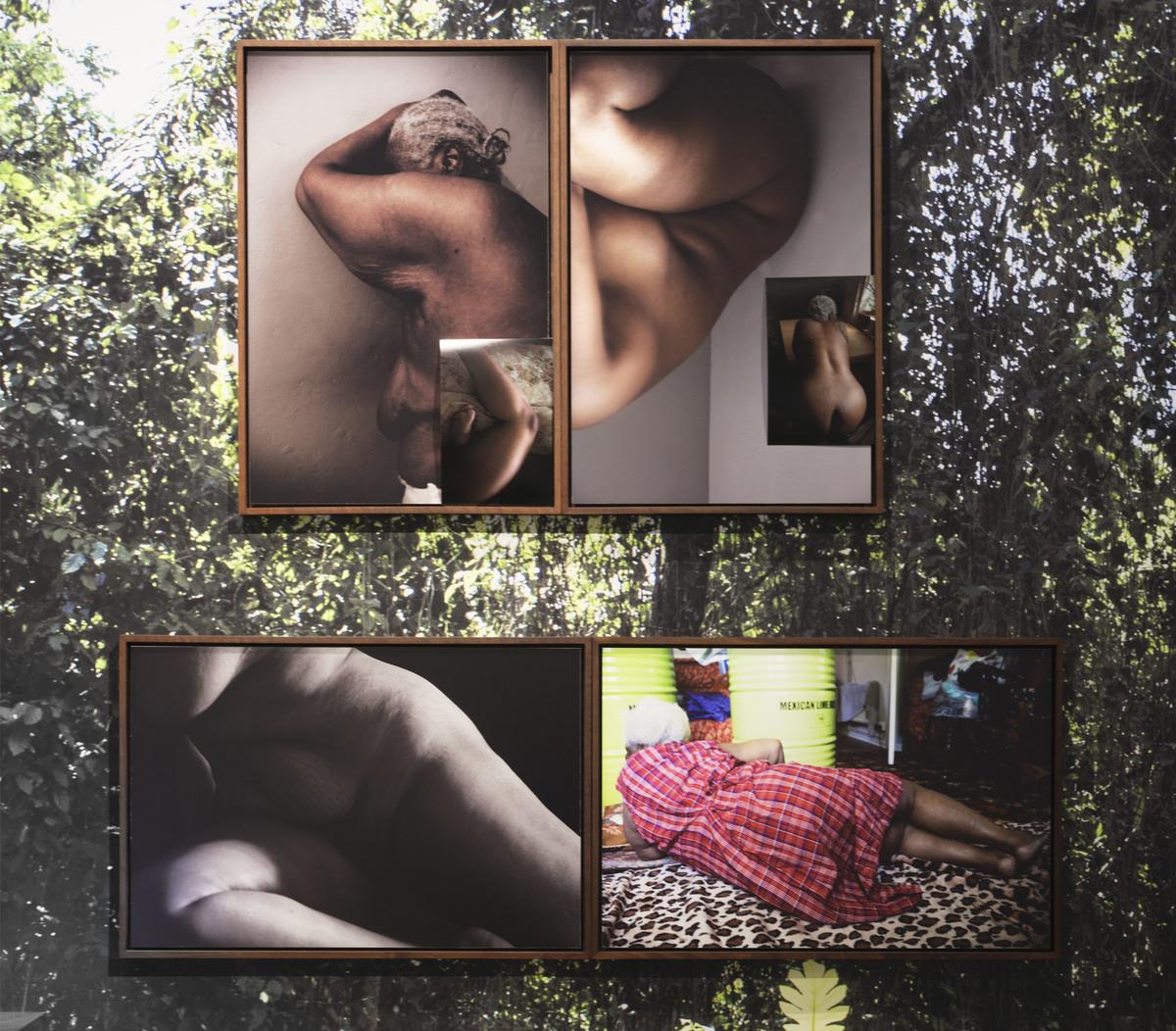
Installation view: Life Between Islands: Caribbean - British Art 1950s - Now, December 11 - April 1, 2024, Art Gallery of Ontario. Artworks © Marcia Michael, Partus Sequitur Ventrum, 2015-2017. Photo: AGO.
You’ve described the importance of recording and remembering, particularly as a means of connecting to your Black matrilineage. Can you explain why you have chosen to present The Object of My Gaze as a multimedia installation that incorporates photography, sculpture, video etc.? What about these mediums that appeal to you in doing this work?
The different mediums represent different ways in which people in my maternal lineage expressed themselves, becoming part of the conversation I was having with my mother. They stand as proof of their existence: I am not here on my own.
The different mediums in the installation are also about embodiment and how the practice of Black matrilineage, a term that describes the way in which the daughter recovers history from her mother, is utilized in this act of recovery. This practice leads me to also become a vessel in which my matrilineal narratives can be discovered and recovered. I talk a lot about proof, these objects within the installation become this proof, they are memory keepers. The installation itself is a larger scene in which memories can be ‘rememoried’. Here, I utilize Toni Morrison’s term ‘rememory’ in describing how the installations sit as versions of history, making themselves visually present.
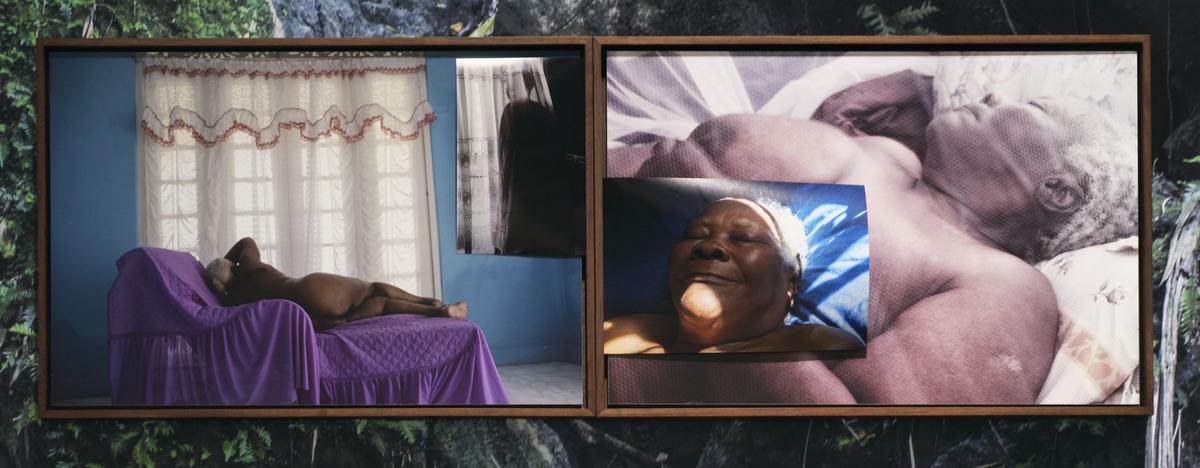
Installation view: Life Between Islands: Caribbean - British Art 1950s - Now, December 11 - April 1, 2024, Art Gallery of Ontario. Artworks © Marcia Michael, Partus Sequitur Ventrum, 2015-2017. Photo: AGO.
Speaking more specifically about your inclusion in Life Between Islands, your work was included among contemporary artists who, in part, were described as building on the foundations laid by other generations of Caribbean-British artists and being “committed to critiquing and overcoming the consequences of centuries of colonization and discrimination.” How do you see these themes converging in your work?
I can answer this question with one word – belonging.
There is such importance in knowing where you come from and where you belong. With this understanding in mind, it allows you to walk the steps you need to in the present towards the future that is yours.
My work thus far has been a series of recoveries. A search for those who came before. As I laid the foundations in my early series, The Study of Kin (2009), where I looked at the way Black people in the British colonies were depicted in photographs, I made images of my family to locate ourselves in that time period – we were always there. In The Object of My Gaze, the use of different mediums was also a way to navigate a path back along my ancestral lineage. Thus, I have been working my way back to discover, reclaim and recover in power. I honour those who laid the foundation for me to be here today. My mother and I are proof of their existence. Our Black female bodies defy the silencing bestowed on many Black female bodies. My mother shows me how to speak and she tells me how to speak with my own voice.
As I look back at the works in the other rooms of the exhibition, I am reminded how some of the other artists, like my ancestors, seemed lost, only to be found within the archive of bodies (of work). Their stories of presence remembered through a reclamation of place. These artists have always been telling their stories of existence and revival, waiting for their memories to be seen and continued in a conversation that would contain traces of their presence. Not forgotten but a rememory that becomes a story to pass on.
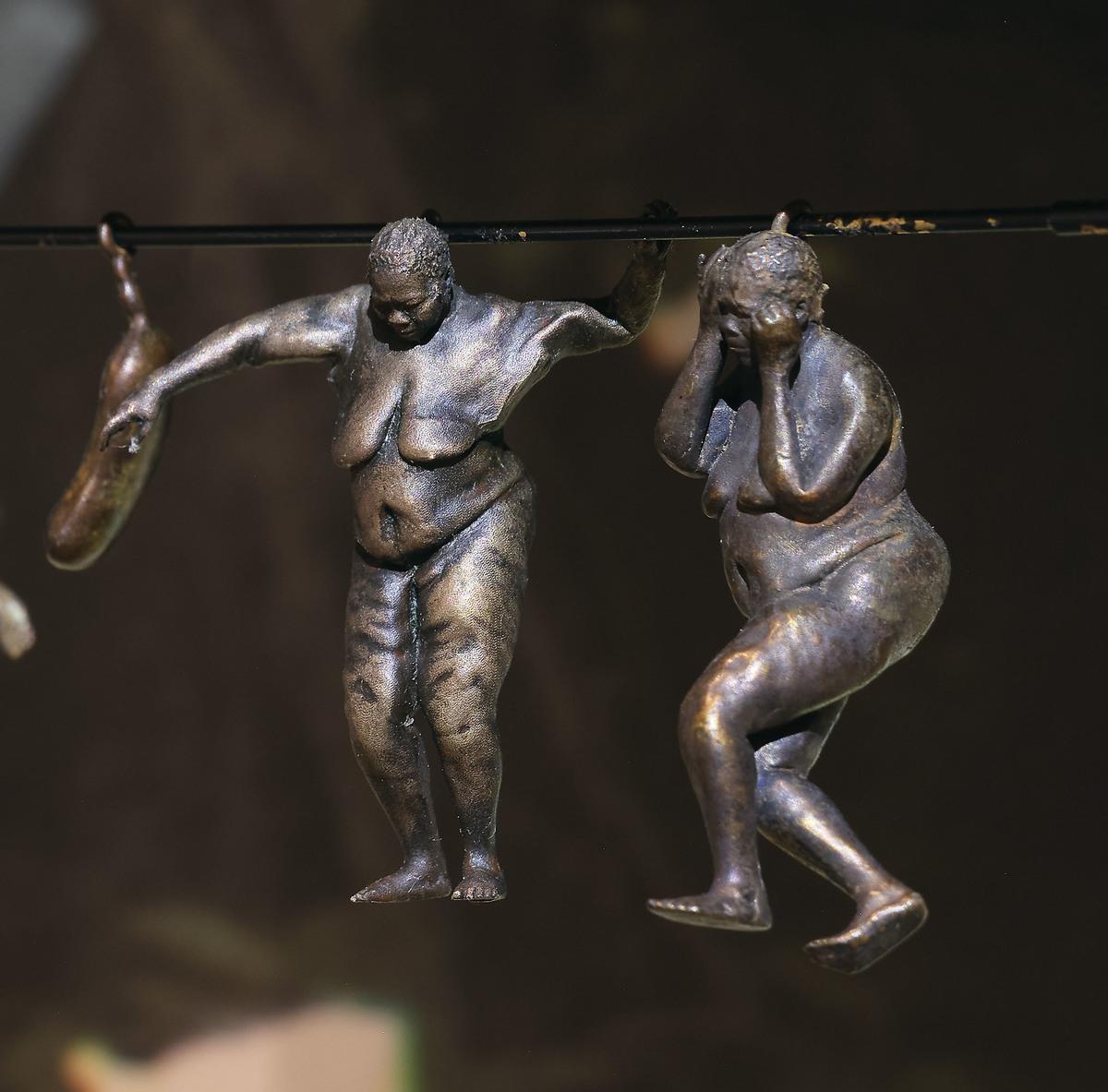
Installation view: Life Between Islands: Caribbean - British Art 1950s - Now, December 11 - April 1, 2024, Art Gallery of Ontario. Artwork © Marcia Michael, Me Remembering You, 2021. Photo: AGO.
As The Object of My Gaze is an ongoing project, what paths are you venturing towards within your work?
There are two paths that I am now following.
The first is to end the series with an inclusion of my daughter and son. In declaring that this act I was in with my mother was an act of Black matrilineage, I need to make sure that I pass on the information I have learnt from my mother to my children. They, too, want to know where we came from, and having done this work, I am able to tell them.
I want to practice a rite of passage that exhibits a cultural connection with the many strands of heritage that are ties that bind our family. If I do not tell or show them, they will not know.
The second path is to turn to my paternal heritage and discover as well as recover elements of creativity that I know reside there. This is because my father was a carpenter. He was also a piano tuner who loved to sing. I have memories of him constructing wooden dolls houses for me and sculpturing wooden crafts for his pleasure. I have some of the wooden sculptures that he made and images of others. I have begun to wonder how his creativity engages with my own as an act of heritage, especially as I establish my matrilineal vocabulary in my practices of recovering histories. I never got to discuss his creativity with him and yet the importance of this in my familial archive is essential.
Life Between Islands: Caribbean-British Art, 1950s–Now was on view at the AGO until April 1, 2024. The exhibition was organized by the AGO and originated by Tate Britain, co-curated by David A. Bailey, Director, International Curators Forum, and Alex Farquharson, Director, Tate Britain. The AGO presentation was overseen by Julie Crooks, AGO Curator, Arts of Global Africa and the Diaspora. For more about Marcia Michael visit her website here.


